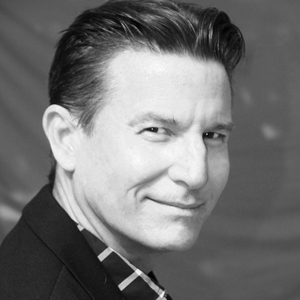- Technology
- SEE MORE
- classical
- general
- talk
- News
- Family
- Bürgerfunk
- pop
- Islam
- soul
- jazz
- Comedy
- humor
- wissenschaft
- opera
- baroque
- gesellschaft
- theater
- Local
- alternative
- electro
- rock
- rap
- lifestyle
- Music
- como
- RNE
- ballads
- greek
- Buddhism
- deportes
- christian
- piano
- djs
- Dance
- dutch
- flamenco
- social
- hope
- christian rock
- academia
- afrique
- Business
- musique
- ελληνική-μουσική
- religion
- World radio
- Zarzuela
- travel
- World
- NFL
- media
- Art
- public
- Sports
- Gospel
- st.
- baptist
- Leisure
- Kids & Family
- musical
- club
- Culture
- Health & Fitness
- True Crime
- Fiction
- children
- Society & Culture
- TV & Film
- gold
- kunst
- música
- gay
- Natural
- a
- francais
- bach
- economics
- kultur
- evangelical
- tech
- Opinion
- Government
- gaming
- College
- technik
- History
- Jesus
- Health
- movies
- radio
- services
- Church
- podcast
- Education
- international
- Transportation
- Other
- kids
- podcasts
- philadelphia
- Noticias
- love
- sport
- Salud
- film
- and
- 4chan
- Disco
- Stories
- fashion
- Arts
- interviews
- hardstyle
- entertainment
- humour
- medieval
- literature
- alma
- Cultura
- video
- TV
- Science
- en
Flexing Your Brain in XR, with Cognitive Designs Todd Maddox

We often talk about\nhow XR technologies are great tools for education and training on\nthis podcast. But why is that? Like, physiologically? Turns out, XR\ntickles the thalamus in ways traditional learning strategies never\ncould, and that\u2019s not us just whistling Dixie. \n\n\n\n\nToday\u2019s guest \u2014\nCognitive Design & Statistical Consulting, LLC CEO Todd Maddox \u2014\nhas a PhD in Computational and Psychological Science, meaning there\u2019s\nno one better to explain why XR and your brain are a match made in\nheaven.\n\n\n\n\n\n\n\nAlan: You\u2019re listening to the XR\nfor Business Podcast with your host, Alan Smithson. Today\u2019s guest is\nTodd Maddox. He is a cognitive design specialist. Todd is a PhD, and\nthe CEO and founder of Cognitive Design and Statistical Consulting\nLLC. He\u2019s also a learning scientist and a research fellow at Amalgam\nInsights. His passion is to apply his 25 years of psychological and\nneuroscientific expertise gained by managing a large human learning,\nmemory, and performance laboratory to help build better education and\ntraining solutions. Todd has published over 200 peer reviewed\nscientific articles, resulting in over 10,000 academic citations and\nhundreds of speaking engagements. During his 25 year academic career,\nhe\u2019s awarded $10-million in federal grants from the National\nInstitute of Health, National Science Foundation, and the Department\nof Defense to support his research. Since entering the private\nsector, Todd has embarked on a mission to translate the amazing body\nof research conducted in the ivory towers into plain English and help\ncompanies leverage this research to build better products. Todd is\nespecially interested in applying his expertise in the psychology and\nneuroscience of learning, memory, and performance, and to use\nimmersive technologies in manufacturing, health care, corporate\ntraining, and retail, to name a few. You can follow Todd on LinkedIn.\nJust look for \u201cTodd Maddox PhD.\u201d \n\n\n\n\nTodd, welcome to the show.\n\n\n\nTodd: Hey, Alan, it is fantastic\nto be here. Thank you.\n\n\n\nAlan: It\u2019s such an honor. I\u2019ve\nbeen reading your posts and your articles, and trying to get through\nsome of your scientific papers is a challenge. It\u2019s so much\ninformation there.\n\n\n\nTodd: Yeah, I hear you. And to\nbe honest, my recommendation is to sort of skim the peer-reviewed\nstuff, because it does seem like it\u2019s written in a foreign language,\neven though it is English. And the LinkedIn post and the more recent\nstuff, where I really try to talk in plain English, because if a\nscientist can\u2019t present their work in plain English then there\u2019s\nsomething wrong. So that\u2019s what I\u2019m trying to do.\n\n\n\nAlan: I love it. And one of the\narticles that was recently published was a report on VR as an empathy\nbuilder, through Tech Trends.\n\n\n\nTodd: Yeah.\n\n\n\nAlan: Here, I\u2019m just going to\nread a quote from it: \n\n\n\n\n\u201cAny profession that requires\ninterpersonal interaction, such as education, retail, food service,\ncall centers is better served with strong empathy.\u201d Let\u2019s start\nwith that.\n\n\n\nTodd: Totally, yeah. Every one\nof those examples is a people example; people interacting with other\npeople. I know we\u2019ve got amazing technologies; we\u2019ve got robots,\nwe\u2019ve got all these wonderful things that are making our lives\nbetter. But let\u2019s face it, in the end, it\u2019s about people interacting\nwith other people and caring for other people, walking a mile in\nsomebody else\u2019s shoes. That is really just so critical. \n\n\n\n\nThese technologies \u2014 in particular\nvirtual reality, I would say \u2014 this is an immersive technology. I\ncould be dropped into any environment. ThatR